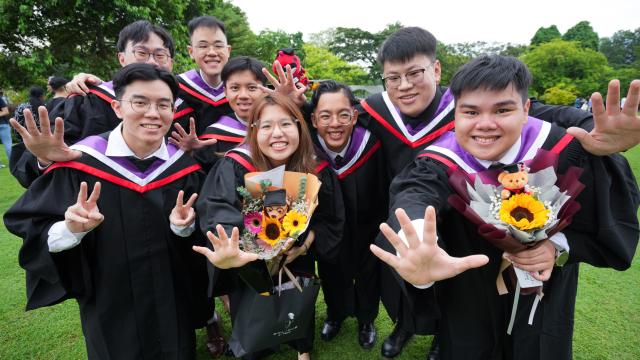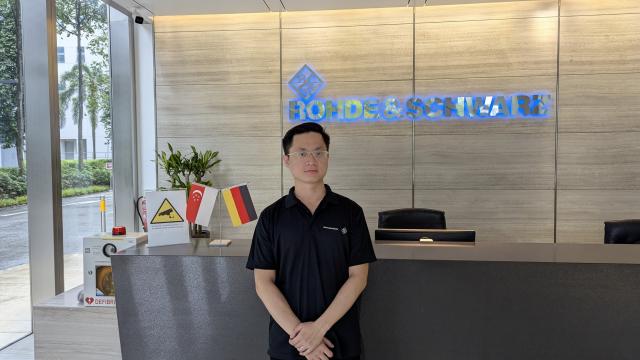Working hand in hand with industry partners, researchers from the Singapore Institute of Technology are finding innovative ways to streamline cleaning in pharmaceutical manufacturing.
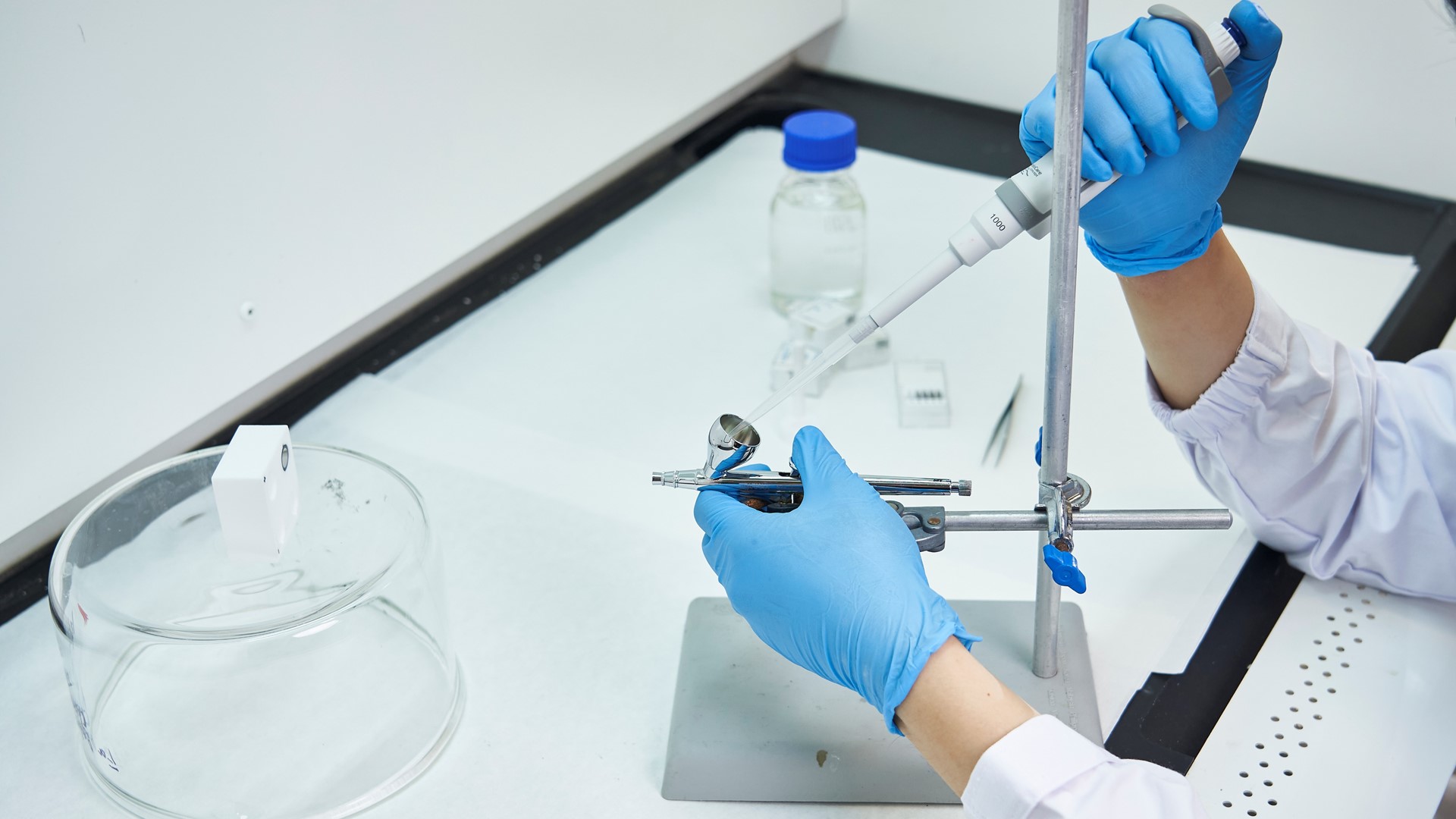
(SIT Photo: Keng Photography/Tan Eng Keng)
While you may not know it by name, anyone who has ever taken medication is likely to be familiar with the concept of an active pharmaceutical ingredient (API)—the part of a drug that produces the intended effects. For instance, certain drugs used to treat headache have paracetamol as their API, while others that treat body pain contain ibuprofen.
To produce APIs of the highest quality, pharmaceutical manufacturers must ensure that their equipment is free from trace amounts of other chemicals and contaminants. However, achieving cleanliness is easier said than done.
To address this challenge, researchers from the Singapore Institute of Technology (SIT) and the Agency for Science, Technology and Research’s (A*STAR) Institute of Chemical Engineering Sciences (ICES) are working together to develop solutions that increase API production efficiency.
A Holistic Approach
In Singapore, API factories are typically multi-purpose, noted SIT’s Associate Professor Reginald Thio, surface science expert and co-Principal Investigator for the project. Since the same equipment is often repurposed to produce different APIs, manufacturers need to ensure that the APIs do not unintentionally interact in the process, which could potentially compromise their mechanism of action.
“After making one product, the equipment has to be decontaminated for the next. This is time-consuming and results in factories having up to 50 per cent of their processing equipment unavailable,” shared Thio.
Indeed, a perennial pain point in the industry has been the lengthy decontamination times, which can last around two weeks. To streamline the process and decrease equipment turnaround time, Thio’s team examined the cleaning protocols in API manufacturing, working with industry partners to realistically model the methods involved.
“Our proposed cleaning methodology aims to combine well-designed laboratory measurements, mathematical modeling, novel equipment, and novel detection approaches to redesign pharmaceutical factory decontamination,” explained Thio.
One lengthy step in the standard cleaning protocol is the testing of various cleaning solvents to see which ones work best. To make this process more efficient, the team used a dissolution equipment that allowed the simultaneous screening of multiple solvents.
Upon identifying the most effective cleaning solvents, the team then used a special cleaning rig designed and built by ICES. Finally, to connect their results to real-life API plant conditions, the team leveraged their expertise on surface phenomena to create models showing why a certain cleaning agent is effective in each situation.
“We found that when an API interacts more with a surface, removal will be harder,” A/Prof Thio said. “This can be attributed to their interaction strength, similar to the bond energy concept where in order to break a stronger bond, more energy needs to be applied compared to a weaker bond.”
Collaborating Towards Improved Cleaning
According to Thio, their project represents the first of many steps in improving the efficiency of Singapore’s API production and pharmaceutical manufacturing in general. Already, the team has shortened cleaning time from the suggested ten working days down to 3.5 days when performed by one person.
Putting their results into practice, a new cleaning agent proposed by the team has also helped pharmaceutical companies like GSK clean fouled surfaces faster – enabling significant resource and time savings.
“Our goal is to reduce the turnaround time of multipurpose API plants in Singapore by at least 20 pe rcent,” explained Thio. “This will create a significant cost advantage for Singapore-based pharmaceutical manufacturing plants, and, at the same time, help to reduce pharmaceutical downtime globally.”
Key to improving the efficiency of decontamination turnaround time has been the close collaboration between academia and industry.
“ICES has been a wonderful partner for SIT in this project, giving our researchers and students access to its state-of-the-art laboratories and technical support,” said Thio. “On SIT’s side, we provide the students who can then work on the project, which will give them much needed real-world experience and make them competitive in the job market.”
With fresh eyes, the SIT students involved applied what they had learned in class to solve challenges encountered during the project. In turn, the collaboration forms part of the practical training that prospective engineers need to be successful in the 21st century.
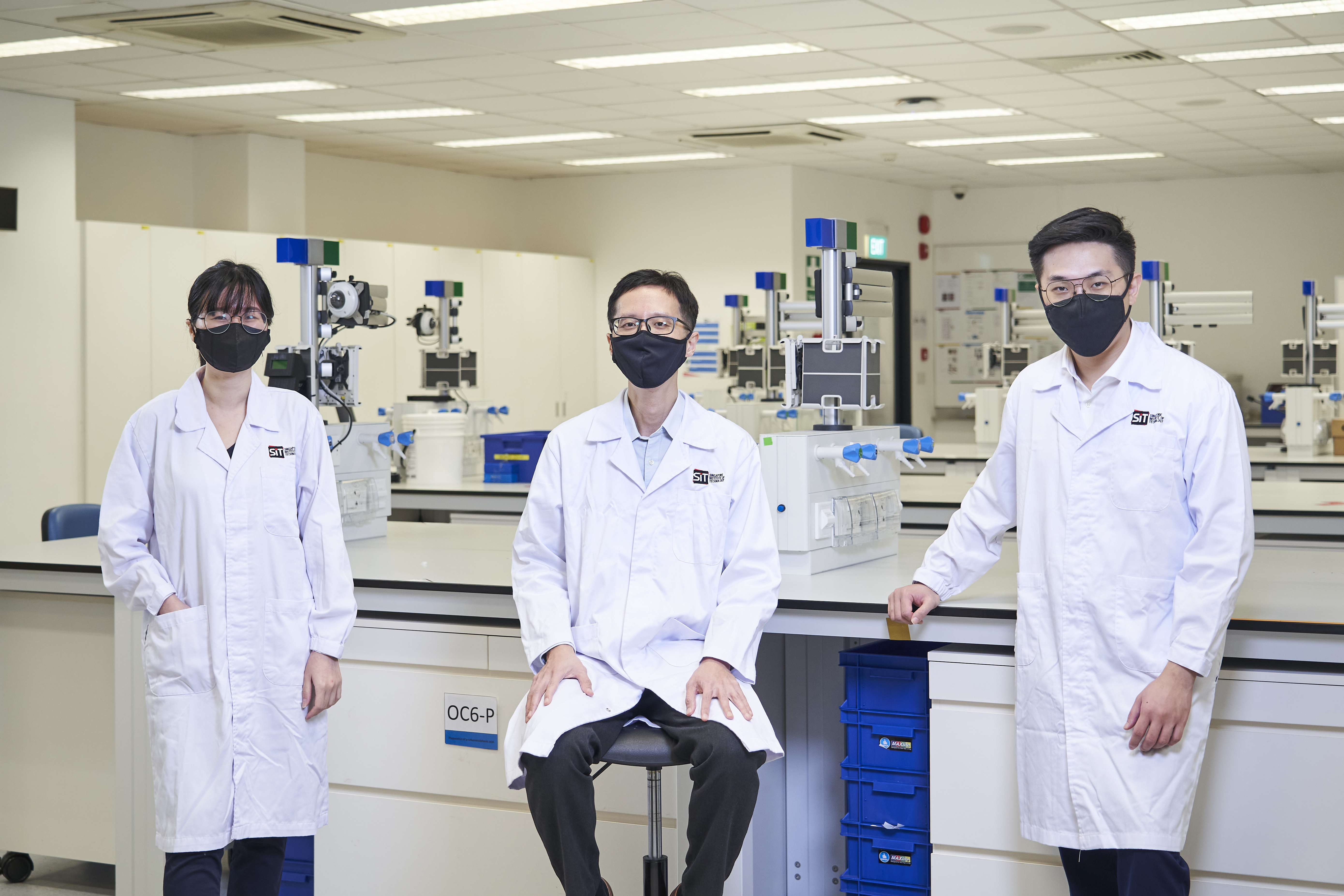
The team of SIT researchers collaborating with A*STAR Institute of Chemical and Engineering Sciences to make the pharma plant cleaning processes more efficient (from left): Chan Hui Ling, Research Engineer; Thio, Co-Principal Investigator; and Darrel Len, Research Engineer. (SIT Photo: Keng Photography/Tan Eng Keng)
“The whole experience was exciting and refreshing, at the same time,” said Mr. Hau Zhi Kyan, one of the SIT students who had worked on the project. “During my applied research in collaboration with A*STAR, I gained exposure to projects with marketable outcomes.”
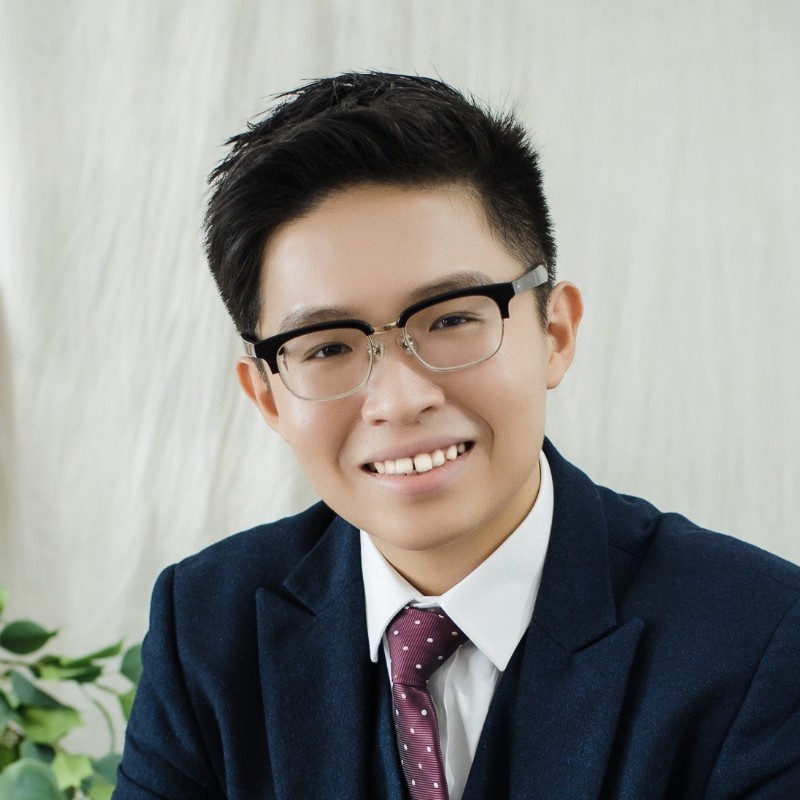 Hau, an SIT Chemical Engineering alumnus who is now a Process Engineer at a semiconductor manufacturing company, shared how A*STAR scientists helped them address the challenge of coating the sensors with a film of APIs with consistent thickness and mass. In tackling this challenge, Hau acquired translatable skills also applicable to other engineering fields.
Hau, an SIT Chemical Engineering alumnus who is now a Process Engineer at a semiconductor manufacturing company, shared how A*STAR scientists helped them address the challenge of coating the sensors with a film of APIs with consistent thickness and mass. In tackling this challenge, Hau acquired translatable skills also applicable to other engineering fields.
By exposing students to intriguing industry studies, partners like ICES also benefit from the collaboration, building a pool of talent that could be tapped in the future.
“Through this partnership, faculty and research staff at SIT get the chance to use their scientific and engineering know-how for the improvement of industry best-practices,” concluded Thio.
———
Copyright: Asian Scientist Magazine; Photo: Singapore Institute of Technology/Tan Eng Keng.
This article first appeared in Asian Scientist Magazine online.















![[FA] SIT One SITizen Alumni Initiative_Web banner_1244px x 688px.jpg](/sites/default/files/2024-12/%5BFA%5D%20%20SIT%20One%20SITizen%20Alumni%20Initiative_Web%20banner_1244px%20x%20688px.jpg)

